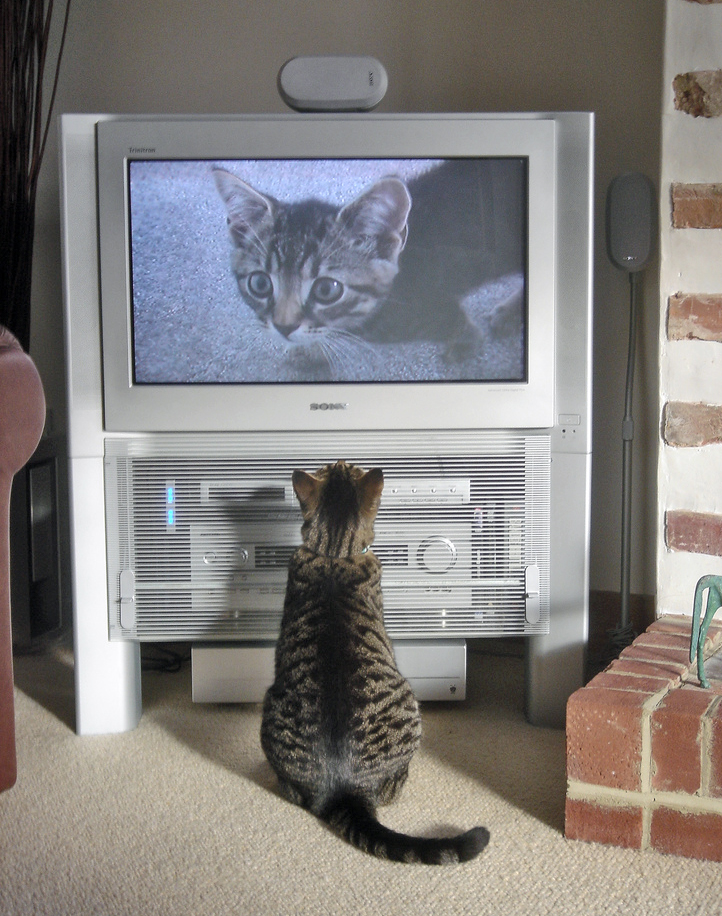|
RPC Paranavaí
RPC Paranavaí is a Brazilian television station based in Paranavaí, PR. It operates on channel 29 (42 UHF digital) and is affiliated to TV Globo. It belongs to the Paranaense Communication Group (GRPCom), in addition to generating local programming. History Founded in 1988 and starting operations in 1992 by the J. Malucelli group as TV Imagem, it was acquired by RPTV in August 1997, when it became a Globo affiliate. The station opened an office in Umuarama in 1999. Technical information Subchannels After two months working in experimental format RPC Paranavaí's digital signal was officially inaugurated on December 18, 2012. In June 2014, its news operation converted to high definition, becoming the last of the eight stations of the RPC network to do so. References {{reflist Television channels and stations established in 1992 Television stations in Brazil TV Globo affiliates 1988 establishments in Brazil ... [...More Info...] [...Related Items...] OR: [Wikipedia] [Google] [Baidu] |
Ultra High Frequency
Ultra high frequency (UHF) is the ITU designation for radio frequencies in the range between 300 megahertz (MHz) and 3 gigahertz (GHz), also known as the decimetre band as the wavelengths range from one meter to one tenth of a meter (one decimetre). Radio waves with frequencies above the UHF band fall into the super-high frequency (SHF) or microwave frequency range. Lower frequency signals fall into the VHF ( very high frequency) or lower bands. UHF radio waves propagate mainly by line of sight; they are blocked by hills and large buildings although the transmission through building walls is strong enough for indoor reception. They are used for television broadcasting, cell phones, satellite communication including GPS, personal radio services including Wi-Fi and Bluetooth, walkie-talkies, cordless phones, satellite phones, and numerous other applications. The IEEE defines the UHF radar band as frequencies between 300 MHz and 1 GHz. Two other IEEE ... [...More Info...] [...Related Items...] OR: [Wikipedia] [Google] [Baidu] |
Paranavaí
Paranavaí is a municipality in the state of Paraná in Brazil that was founded on December 14, 1952. Paranavaí is located in the Northwest part of the state of Paraná, Paranavaí is also one of the richest cities in Paraná and has a population of 95,525 (IBGE, 2024). It constitutes a medium regional centre whose main activities include commerce, services, and agro-industries (cassava flour, chicken, orange). In addition, Paranavaí has some higher education institutions, which include the State College of Education, Science and Letters (FAFIPA- Unespar). Paranavaí is also known for its only professional soccer team, the Atlético Clube Paranavaí Atlético Clube Paranavaí, usually known simply as Paranavaí, is a Brazilian Football League Teams, Brazilian football team from the city of Paranavaí, Paraná (state), Paraná state, founded on March 14, 1946. History On March 14, 1946, Atl� ... - ACP ( Paraná State Championship runner-up in 2003 and champion in 2007), and ... [...More Info...] [...Related Items...] OR: [Wikipedia] [Google] [Baidu] |
TV Globo
TV Globo (stylized as tvglobo; , ), formerly known as Rede Globo de Televisão (; shortened to Rede Globo) or simply known as Globo, is a Brazilian free-to-air Television broadcasting, television network, launched by media proprietor Roberto Marinho on 26 April 1965. It is owned by Globo, a division of media conglomerate Grupo Globo, in turn owned by Marinho's heirs. The network is by far the largest of its holdings. TV Globo is the largest commercial TV network in Latin America, the second largest commercial TV network in the world and the largest producer of telenovelas. All of this makes Globo renowned as one of the most important television networks in the world and Grupo Globo as one of the largest media groups. TV Globo is headquartered in the Jardim Botânico, Rio de Janeiro, Jardim Botânico neighborhood of Rio de Janeiro, where its news division is based. The network's main production studios are located at a complex dubbed Estúdios Globo, located in Jacarepaguá, in ... [...More Info...] [...Related Items...] OR: [Wikipedia] [Google] [Baidu] |
National Telecommunications Agency (Brazil)
The National Telecommunications Agency () or Anatel is a special agency in Brazil Brazil, officially the Federative Republic of Brazil, is the largest country in South America. It is the world's List of countries and dependencies by area, fifth-largest country by area and the List of countries and dependencies by population ... created by the general telecommunications act (Law 9472, 16/07/1997) in 1997 and governed by Decree 2338 of 07/10/1997. The agency is administratively and financially independent, and not hierarchically subordinate to any government agency. Its decisions can only be appealed in court. From the Ministry of Communications, Anatel has inherited the powers of granting, regulating, and supervising telecommunications in Brazil as well as much technical expertise and other material assets. Certification of Telecommunication Products by Anatel The certification of telecommunication equipment in Brazil is regulated by the National Telecommunications Agency ... [...More Info...] [...Related Items...] OR: [Wikipedia] [Google] [Baidu] |
RPC 2015
RPC may refer to: Science and technology * Rational polynomial coefficient * Reactive Plastic Curtain, a carbon-dioxide-absorbing device used in some rebreather breathing sets * Regional Playback Control, a regional lockout technology for DVDs * Remote procedure call, an inter-process communication technique in networked computing ** Open Network Computing Remote Procedure Call, IETF RPC, aka "Sun RPC" ** DCE/RPC, for Distributed Computing Environment by Open Software Foundation ** JSON-RPC, a "JSON encoded" variant ** XML-RPC, an "XML encoded" variant * Resistive plate chamber, a simple type of particle detector used in experimental particle physics * Reversed-phase chromatography, a chemistry technique * Acorn Risc PC * Rocket Pod Container, the interchangeable containers used to transport and launch missiles for use with the M270 Multiple Launch Rocket System * Rotary phase converter, an electrical machine that converts power from one polyphase system (including frequency) ... [...More Info...] [...Related Items...] OR: [Wikipedia] [Google] [Baidu] |
Display Resolution
The display resolution or display modes of a digital television, computer monitor, or other display device is the number of distinct pixels in each dimension that can be displayed. It can be an ambiguous term especially as the displayed resolution is controlled by different factors in cathode-ray tube (CRT) displays, flat-panel displays (including liquid-crystal displays) and projection displays using fixed picture-element (pixel) arrays. It is usually quoted as ', with the units in pixels: for example, ' means the width is 1024 pixels and the height is 768 pixels. This example would normally be spoken as "ten twenty-four by seven sixty-eight" or "ten twenty-four by seven six eight". One use of the term ''display resolution'' applies to fixed-pixel-array displays such as plasma display panels (PDP), liquid-crystal displays (LCD), Digital Light Processing (DLP) projectors, AMOLED, OLED displays, and similar technologies, and is simply the physical number of columns and rows of pi ... [...More Info...] [...Related Items...] OR: [Wikipedia] [Google] [Baidu] |
Aspect Ratio (image)
The aspect ratio of an image is the ratio of its width to its height. It is expressed as two numbers separated by a colon, in the format width:height. Common aspect ratios are 1.85:1 and 2.39:1 in cinematography, 4:3 and 16:9 in television, and 3:2 in still photography and 1:1: Used for square images, often seen on social media platforms like Instagram, 21:9: An ultrawide aspect ratio popular for gaming and desktop monitors. Some common examples The common film aspect ratios used in cinemas are 1.85:1 and 2.39:1.The 2.39:1 ratio is commonly labeled 2.40:1, e.g., in the American Society of Cinematographers' ''American Cinematographer Manual'' (Many widescreen films before the 1970 Society of Motion Picture and Television Engineers, SMPTE revision used 2.35:1). Two common videography, videographic aspect ratios are 4:3 (1.:1), the universal video format of the 20th century, and 16:9 (1.:1), universal for high-definition television and European digital television. Other cinematic ... [...More Info...] [...Related Items...] OR: [Wikipedia] [Google] [Baidu] |
1080i
In high-definition television (HDTV) and video display technology, 1080i is a video display format with 1080 lines of vertical resolution and Interlaced video, interlaced scanning method. This format was once a standard in HDTV. It was particularly used for broadcast television because it can deliver high-resolution images without needing excessive bandwidth. This format is used in the SMPTE 292M standard. Definition The number "1080" in 1080i refers to the number of horizontal lines that make up the vertical resolution of the display. Each of these lines contributes to the overall detail and clarity of the image. The letter "i" stands for Interlaced video, interlaced. This is a technique where the image is not displayed all at once. Instead, the frame is split into two fields. One field contains the odd-numbered lines, and the other field contains the even-numbered lines. These fields are displayed in rapid succession, giving the appearance of a full image to the human eye. The ... [...More Info...] [...Related Items...] OR: [Wikipedia] [Google] [Baidu] |
Television Channels And Stations Established In 1992
Television (TV) is a telecommunications, telecommunication media (communication), medium for transmitting moving images and sound. Additionally, the term can refer to a physical television set rather than the medium of signal transmission, transmission. Television is a mass media, mass medium for advertising, entertainment, news, and sports. The medium is capable of more than "radio broadcasting", which refers to an audio signal sent to radio receivers. Television became available in crude experimental forms in the 1920s, but only after several years of further development was the new technology marketed to consumers. After World War II, an improved form of black-and-white television broadcasting became popular in the United Kingdom and the United States, and television sets became commonplace in homes, businesses, and institutions. During the 1950s, television was the primary medium for influencing public opinion.Diggs-Brown, Barbara (2011''Strategic Public Relations: Audi ... [...More Info...] [...Related Items...] OR: [Wikipedia] [Google] [Baidu] |
Television Stations In Brazil
Television (TV) is a telecommunication medium for transmitting moving images and sound. Additionally, the term can refer to a physical television set rather than the medium of transmission. Television is a mass medium for advertising, entertainment, news, and sports. The medium is capable of more than "radio broadcasting", which refers to an audio signal sent to radio receivers. Television became available in crude experimental forms in the 1920s, but only after several years of further development was the new technology marketed to consumers. After World War II, an improved form of black-and-white television broadcasting became popular in the United Kingdom and the United States, and television sets became commonplace in homes, businesses, and institutions. During the 1950s, television was the primary medium for influencing public opinion.Diggs-Brown, Barbara (2011''Strategic Public Relations: Audience Focused Practice''p. 48 In the mid-1960s, color broadcasting was in ... [...More Info...] [...Related Items...] OR: [Wikipedia] [Google] [Baidu] |


